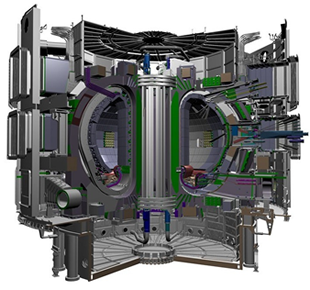 At its recent 10th anniversary celebration, the European Machine Vision Association didn't devote much time to memorializing its productive first decade of existence. The technology that underpins the industry continues to advance at a rapid rate, and machine vision manufacturers and end-users find themselves dealing with exciting and unfamiliar challenges. The obvious star of the EMVA gala's show was a future project that promises to showcase a broad new range of uses for machine vision technology.
At its recent 10th anniversary celebration, the European Machine Vision Association didn't devote much time to memorializing its productive first decade of existence. The technology that underpins the industry continues to advance at a rapid rate, and machine vision manufacturers and end-users find themselves dealing with exciting and unfamiliar challenges. The obvious star of the EMVA gala's show was a future project that promises to showcase a broad new range of uses for machine vision technology.
After years of planning and development, ground has finally been broken at the future headquarters of the ITER project in southern France. Simply put, ITER is one of the biggest science experiments that the world has ever seen. By demonstrating the fundamental safety and technical simplicity of fusion power, ITER aims to prove that it's possible to commercialize the technology on a global basis. The stakes are huge: While success would jolt the planet's energy industry and usher in a new era of clean, affordable power generation, failure might bolster the arguments of clean energy skeptics who argue that fossil fuels are the only viable sources of industrial-scale electrical power. Based on the 'tokamak' concept of magnetic confinement two isotopes of hydrogen are heated to temperatures in excess of 150 million°C, forming a hot plasma.
Based on the 'tokamak' concept of magnetic confinement two isotopes of hydrogen are heated to temperatures in excess of 150 million°C, forming a hot plasma.
Click to learn more about the world's largest Tokamak.
According to the project's website, "ITER will test key technologies necessary for the next step: the demonstration fusion power plant" that will showcase the commercial potential of fusion power. The current project's goal is a 90 percent input-output efficiency ratio. In other words, the experiment must generate at least 10 times as much power as it consumes. To achieve this, ITER will use the world's largest Tokamak machine. This giant contraption will feature doughnut-like tubes of super-heated plasma surrounded by a system of stabilizing magnets and a powerful refrigeration apparatus. At 150 million degrees Celsius, the plasma that circulates in the Tokamak will be several times hotter than the sun.
ITER's core will also experience hellish pulses of radiation and electricity. Since human scientists and engineers won't be able to get anywhere near the experiment and live to tell about it, ITER will rely heavily on automated diagnostic and inspection systems for safety and calibration purposes. The four dozen on-site diagnostic devices will include "old-fashioned" technologies like lasers and X-rays as well as powerful machine vision devices known as neutron cameras.
From their location near the heart of the Tokamak core, these cameras will convert particle flows and radiation bursts into visible-spectrum data that scientists can easily interpret. They'll also encounter some of the harshest conditions in the universe. ITER's scientists estimate that the fluence -- a measure of particle volatility over time -- that these cameras will encounter could exceed previous maximum measurements by a factor of 10,000.
ITER isn't the world's only high-tech machine vision showcase. The National Institute of Standards and Technology currently uses neutron cameras to measure particle flows in its advanced experiments. At NIST, these exciting pieces of machine vision technology use a two-step process to convert particle flow observations into visible-light images. After a device known as a "scintillator" transforms passing neutrons into visible photons, a nearby "digitizer" creates a digital image of their flow patterns. While it's not yet possible to see individual neutrons going about their business, their paths through space are clear as day.
You don't have to understand the inner workings of a Tokamak machine to appreciate machine vision's indispensable role in large-scale, high-tech science experiments. Going forward, increasingly powerful and durable machine vision cameras will make it easier for scientists and technicians to peer into harsh, remote environments. The whole world stands to benefit from a technology that turns dangerous, complicated science experiments into safe, routine examinations.
